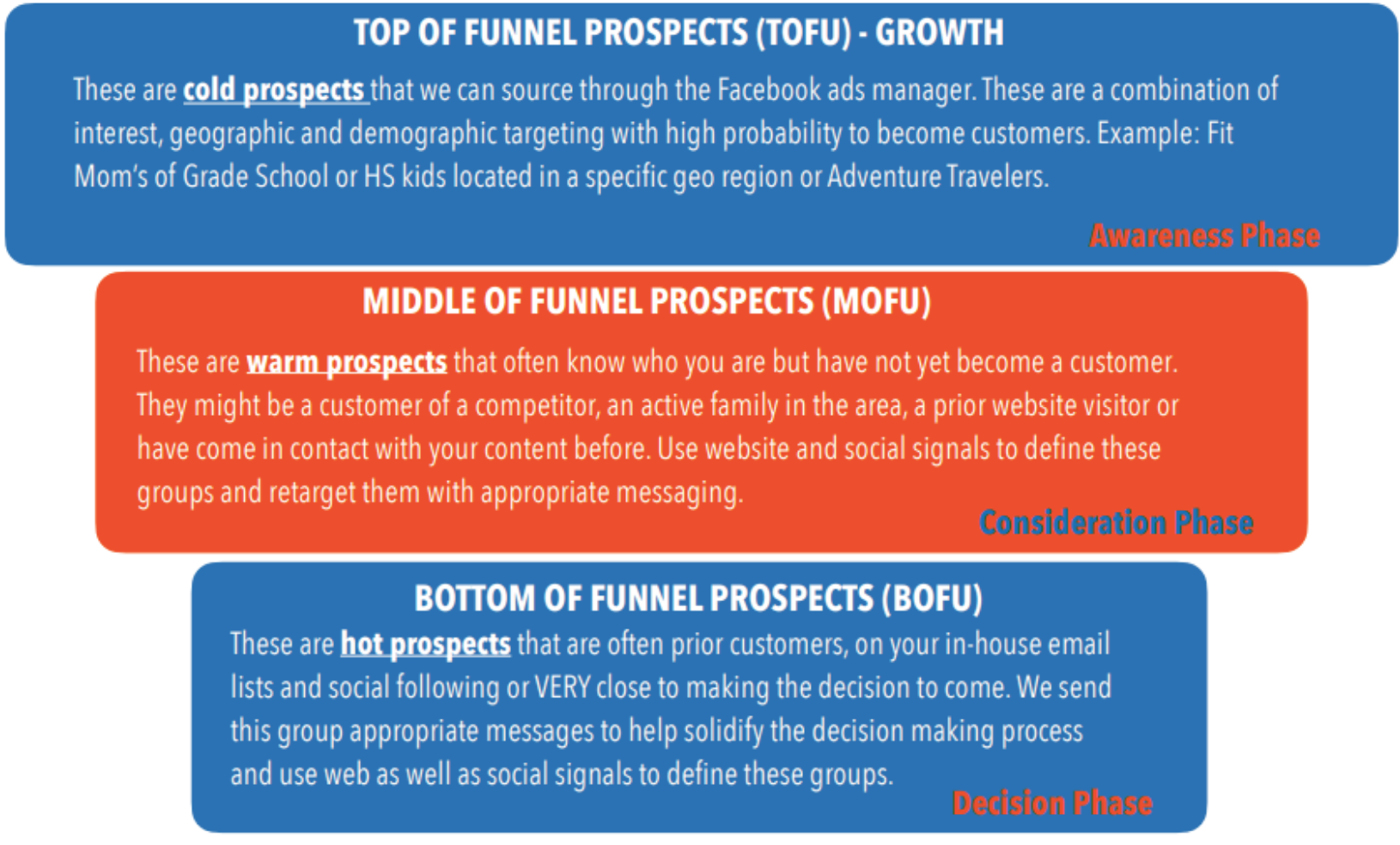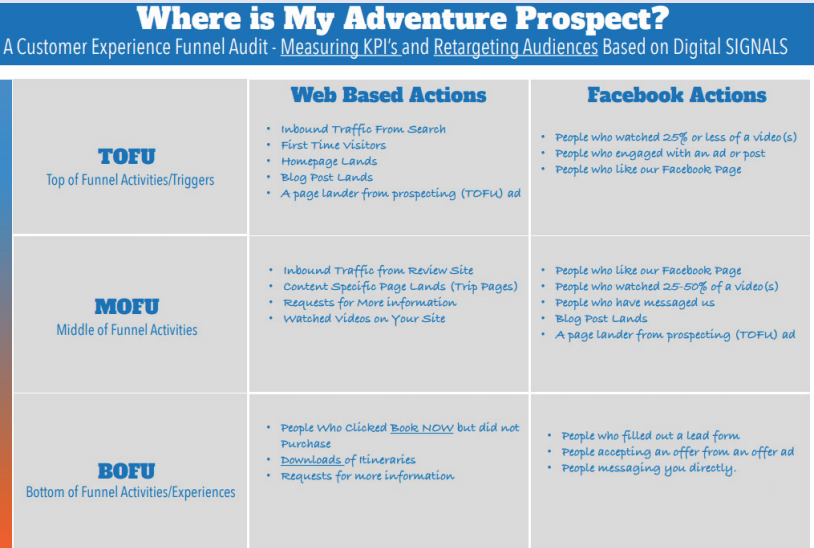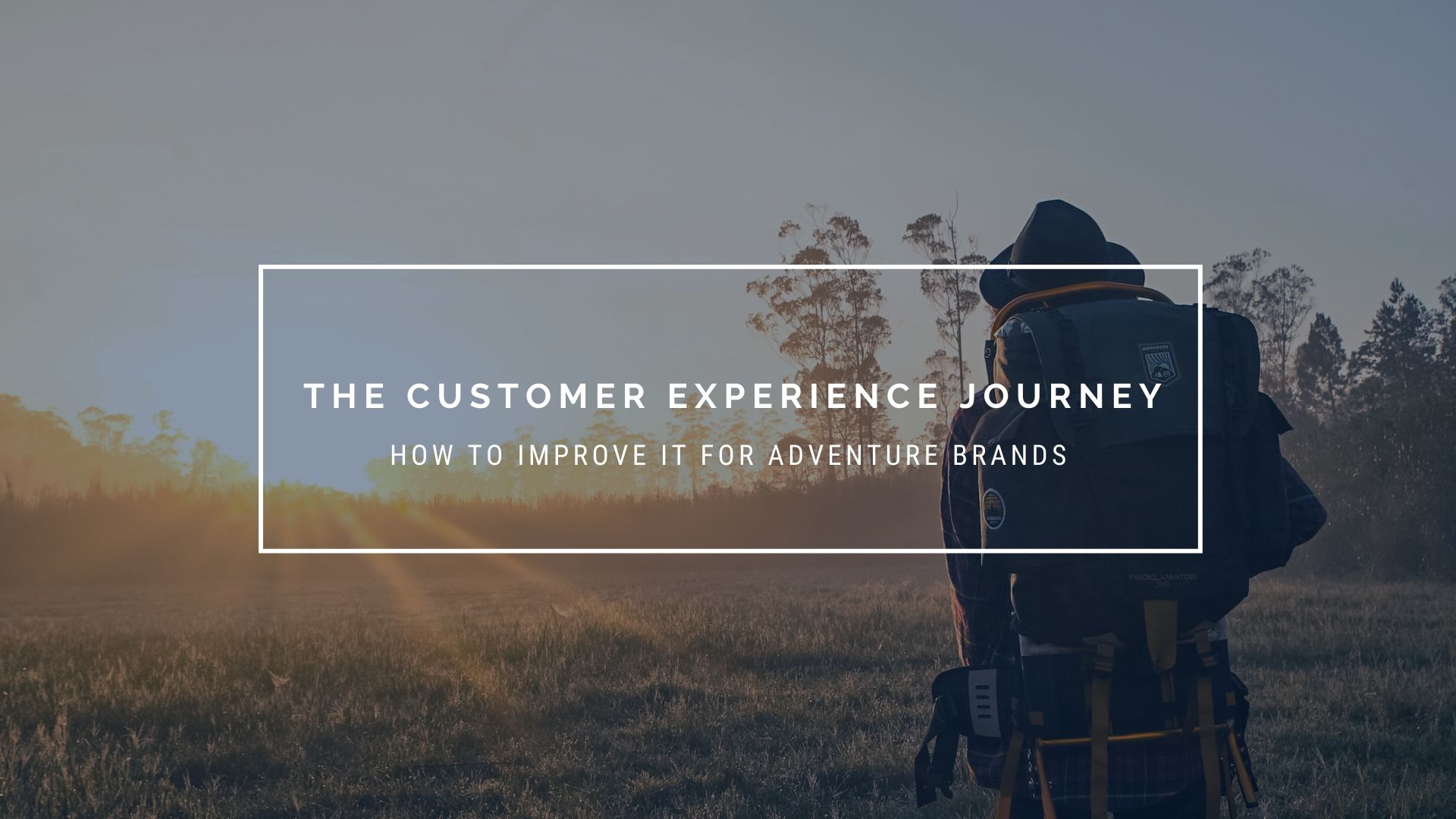How Strong is Your Brand’s Customer Experience Journey?
When planning any successful marketing effort, there are two key questions you need to start with:
- Who is your adventure prospect/customer?
There are nearly an infinite variety of interests, demographics, and behaviors you can target through paid social media advertising like Facebook. Knowing who to talk to means being on point, reducing your ad costs, and converting more of the right customers.
Access our Adventure Prospect worksheet to help you identify your best prospects. - Where are your adventure prospects in their customer experience journey with your business?
Identifying where your adventure prospects are in relationship to doing business with you is critical. You want to create content and campaigns that speak directly to their needs, concerns, and thoughts. This takes into account their customer experience journey. You want to be able to deliver information to them to help move them from awareness, to interest, to a decision to buy.
Here’s why this is a key piece of your marketing efforts: To speak to a prospect who doesn’t know who you are yet (a top-of-funnel prospect) with “Buy now!” messaging (a bottom-of-funnel message), is to waste ad dollars, time, and resources. Conversely, prospecting with an awareness message to a prospect who is ready to buy, doesn’t help you convert them.
Identifying what phase your adventure prospect is in allows you to serve up supportive content and information. This drives the best conversion rate possible. You can identify where they are in their customer experience journey by tracking their digital behavior. That behavior is the exact actions they take with your content.
Understanding the Phases of the Customer Experience Journey
The three phases to the customer experience journey are:
Top of Funnel (TOFU) – Awareness Phase
Middle of Funnel (MOFU) – Consideration Phase
Bottom of Funnel (BOFU) – Decision Phase

What is the Top of Funnel (TOFU) – AWARENESS Phase?
This is a list of actions your customer takes when first seeking out or stumble across your adventure brand. Examples include: Visits to general website pages, blog posts, educational videos, a search on Google for things to do in the area, etc. This audience needs to know what you do, and how it is relevant to them. They are typically “cold” leads that you may build within Facebook using interests, demographics, and behaviors.
What is the Middle of Funnel (MOFU) – CONSIDERATION Phase?
This is a list of actions your customer takes when seriously considering your service. Examples include: Downloading resources and guides, watching demo videos, landing on web pages with product-specific information, signing up to emails, listening to your podcast, etc. This audience wants to know the details of what you offer. They are typically “warm” leads that you build through website and social media engagement behaviors, are subscribers to your email list, or inactive customers. They know your brand.
What is the Bottom of Funnel (BOFU) – ACTION Phase?
This is a list of actions your customer takes when near booking or making a purchase. Examples include: Making a phone call to sales, downloading a specific trip itinerary or taking steps in the purchase process. This audience needs to know how they are supported as a customer, how easy it is to buy, and how to take the next step. They are “hot” leads that you build from very specific actions taken on your site, an in-house customer list you’ve curated, or highly engaged followers/email subscribers.
A common mistake we see among adventure brand owners is that they are often so focused on prospecting for new customers from the TOFU and MOFU pool that they overlook and under-serve the people they’ve already attracted who are ready to purchase. Your Bottom of Funnel prospects are hot; they’re ready to make a decision, and speaking directly to them means the highest conversion rate of all three funnels.
Applying the Phases of the Customer Experience Journey to Your Marketing Efforts
By layering the three phases on top of your adventure brand’s specific available actions (that is, call-to-actions, content, website pages, etc.), we can identify where your adventure prospect is in their customer experience journey.

YOUR ACTION ITEM:
Map out what you have to offer at every step of the way to identify where your TOFU, MOFU, and BOFU audiences are, and what to serve them to best support them. Note: Some of these signals and behaviors are universal, and we’ve included them on the worksheet already… but if they don’t apply to you, just delete them.
If you have any questions, feel free to contact us. We love to talk marketing and are happy to help!
WORKSHEET: Customer Experience Journey

